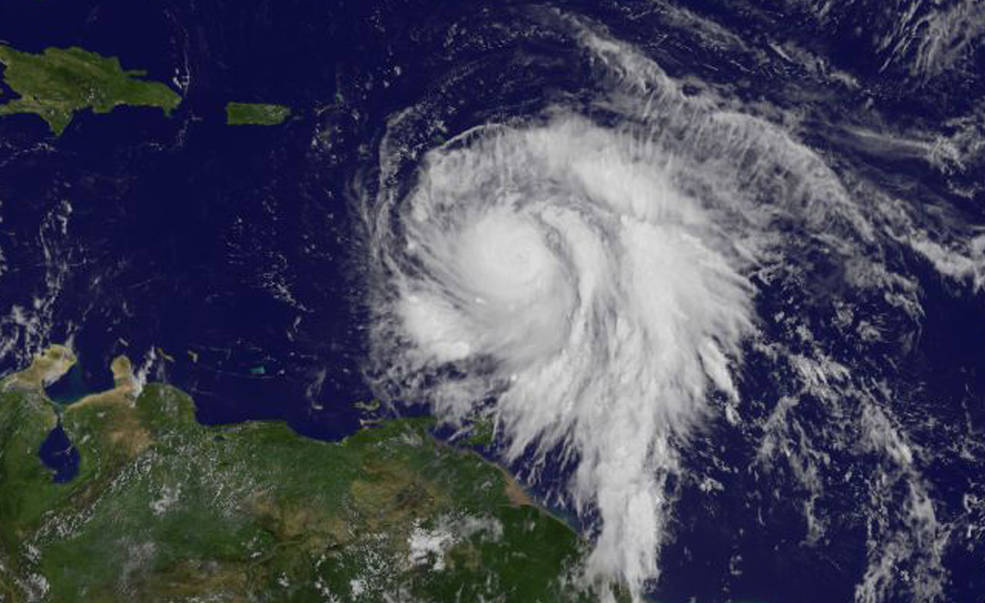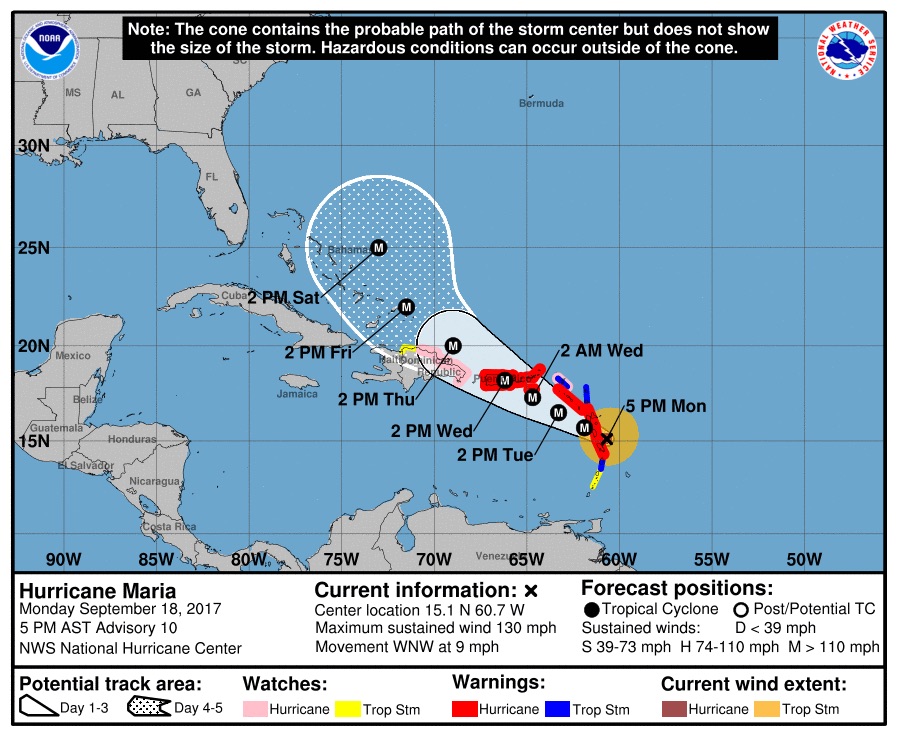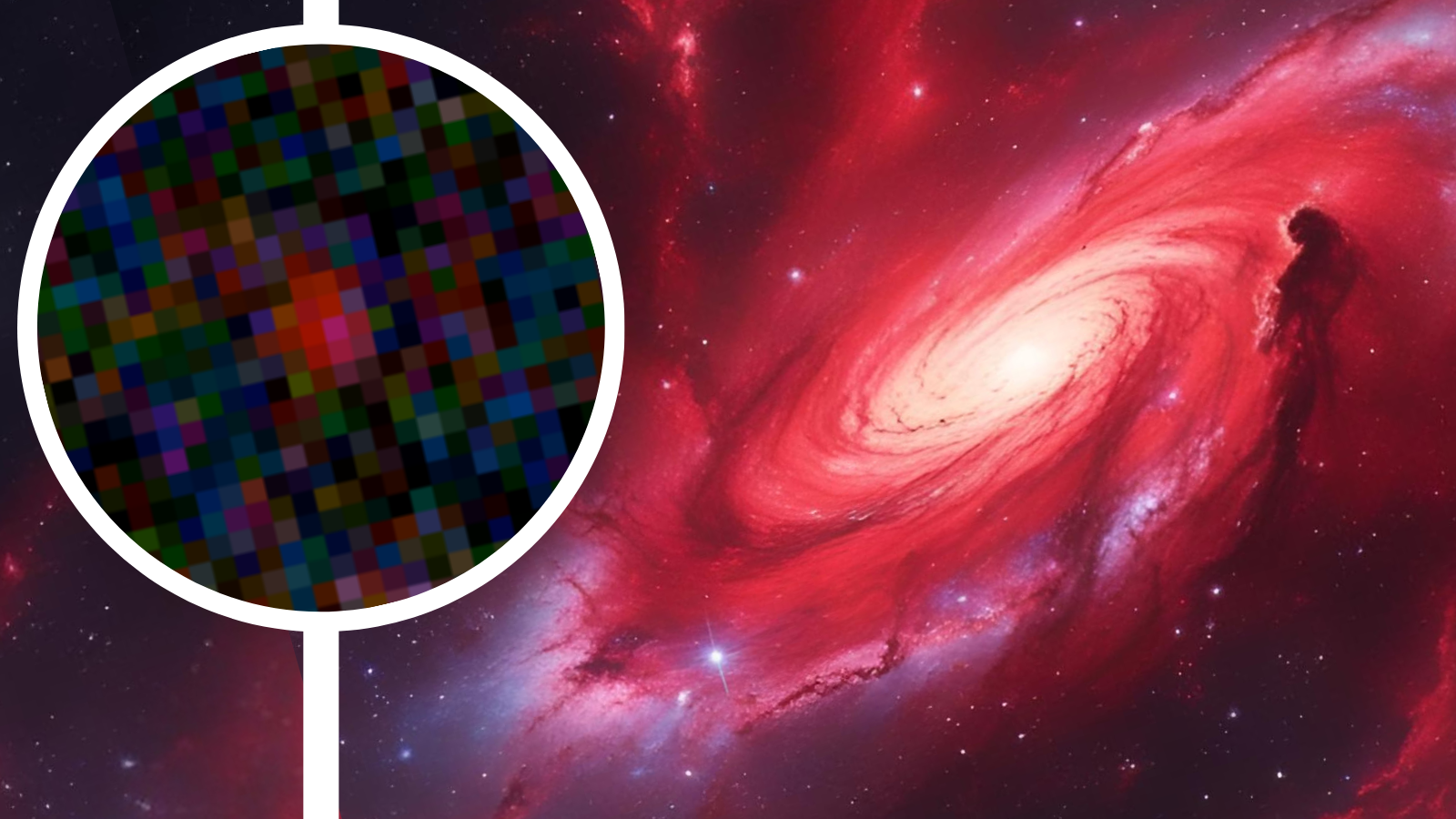Arecibo Observatory Closes as Hurricane Maria Threatens Puerto Rico
Update 9/18 at 8:15 p.m. EDT: The National Hurricane Center has declared Hurricane Maria a "potentially catastrophic category 5 hurricane." This article has been updated to show that the storm has been upgraded from a category 4 to category 5 hurricane.
The Arecibo Observatory in Puerto Rico will cease observations today (Sept. 18) through Thursday (Sept. 21) and keep its visitor center closed through Sept. 28, due to the impending arrival of Hurricane Maria, officials said today on Twitter.
The facility is home to the second-largest radio telescope in the world, with a primary dish measuring 1,000 feet wide (305 meters) and 167 feet deep (50.9 meters), set into a slight depression in a mountain range. The telescope is used to study a wide variety of cosmic phenomena, look for near-Earth asteroids that could potentially collide with the planet and search for signs of alien civilizations.

High winds from the storm are expected to reach Puerto Rico early Tuesday (Sept. 19), with the storm likely making landfall about 8 p.m. EDT (midnight GMT on Sept. 20). Earth-observing satellites from NASA and the National Oceanic and Atmospheric Administration (NOAA) have been tracking the storm's path through the Atlantic.
"Due to the threat of Hurricane Maria, The Arecibo Observatory has begun hurricane readiness procedures," officials said on Twitter. "The preparations will include securing the telescope, physical facilities and research equipment."
Officials also said they were delaying planned social media posts in celebration of National Hispanic Heritage Month.

Hurricane Maria is barreling down on many Caribbean islands that were devastated by Hurricane Irma, which swept through the region earlier this month. The Arecibo Observatory also closed during Hurricane Irma, although officials reported no significant damage from the storm.
Get the Space.com Newsletter
Breaking space news, the latest updates on rocket launches, skywatching events and more!
Follow Calla Cofield @callacofield. Follow us @Spacedotcom, Facebook and Google+. Original article on Space.com.
Join our Space Forums to keep talking space on the latest missions, night sky and more! And if you have a news tip, correction or comment, let us know at: community@space.com.

Calla Cofield joined Space.com's crew in October 2014. She enjoys writing about black holes, exploding stars, ripples in space-time, science in comic books, and all the mysteries of the cosmos. Prior to joining Space.com Calla worked as a freelance writer, with her work appearing in APS News, Symmetry magazine, Scientific American, Nature News, Physics World, and others. From 2010 to 2014 she was a producer for The Physics Central Podcast. Previously, Calla worked at the American Museum of Natural History in New York City (hands down the best office building ever) and SLAC National Accelerator Laboratory in California. Calla studied physics at the University of Massachusetts, Amherst and is originally from Sandy, Utah. In 2018, Calla left Space.com to join NASA's Jet Propulsion Laboratory media team where she oversees astronomy, physics, exoplanets and the Cold Atom Lab mission. She has been underground at three of the largest particle accelerators in the world and would really like to know what the heck dark matter is. Contact Calla via: E-Mail – Twitter
